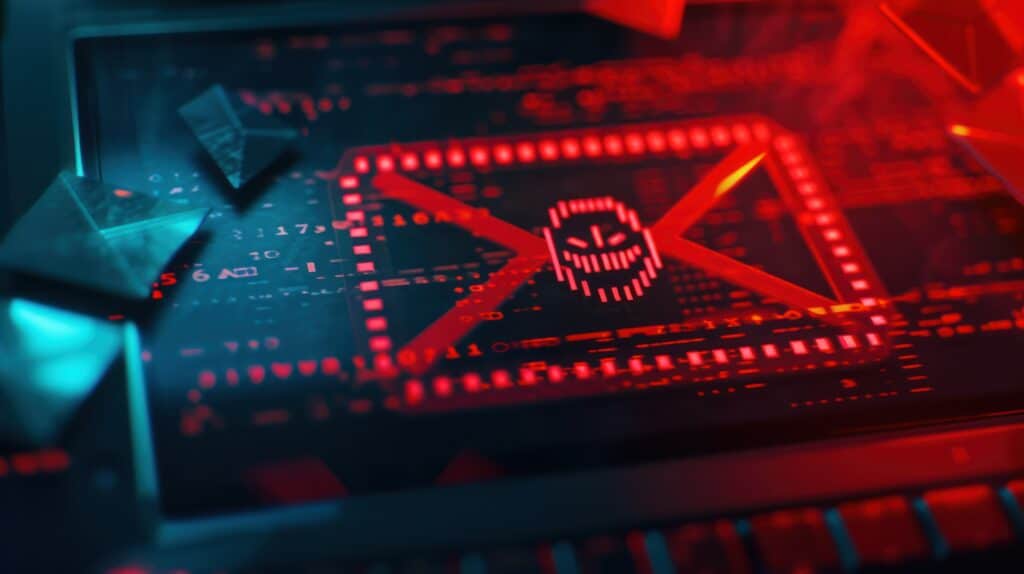Cybersecurity: why protecting public data is critical
- Cybersecurity is now a major digital challenge in the face of new and varied threats: cybercriminals, enemy states or activist groups.
- Cyber threats are diversifying, targeting critical infrastructures and being reinforced by new technologies (artificial intelligence, blockchain, etc.).
- Public institutions are important targets because they concentrate sensitive data such as personal, financial or strategic information.
- Public institutions must put a strategy in place that protects their information systems against threats while guaranteeing the continuity of services and respecting the rights and freedoms of citizens.
- France, Poland and Italy have put in place strategies to deal with cyber threats, with common objectives but different action plans.
The advent of personal computers and the emergence of the Internet in the 1980s triggered a process of transformation in public and private organisations. The first few decades saw the appearance of the first websites and the creation of simple data processing, then these were refined to set up interactive services with data exchanges1 before arriving today at the use of artificial intelligence. Digital technology is now at the heart of the way services are delivered to users, helping to optimise the cost of the service provided, improve responsiveness and offer a personalised experience2.
The transformation of services has led organisations not just modernise procedures, but to rethink them in ways that make them more accessible to end users and better adapted to the information system. This in-depth integration has made it possible to optimise the efficiency of services, which incorporate the notion of data persistence, access rights, re-use possibilities, etc. right from the design stage. Digital technology is no longer a support function for organisations, but an area at the heart of their operations. No organisation today can do without cross-functional applications for managing leave, pay and expenses; no business unit can do without the applications that enable it to carry out its activity, however diverse it may be (logistics, budget, engineering, etc.).
The emergence of new cyber threats
The massive adoption of digital technology and the way it is interwoven into the heart of information systems has provided fertile ground for the emergence of new cyber threats. The threats are manifold and perpetrated by a variety of adversaries: cybercriminals, enemy states or activist groups. Most of them now have increasingly sophisticated tools with which to carry out large-scale attacks.
Moreover, cyber threats have become more diverse and sophisticated over the years, undermining the security of information systems. From Denial of Service (DoS) attacks designed to saturate systems, to ransomware that paralyses business in exchange for a ransom, as well as the hacking of sensitive data and social engineering attacks that manipulate users, cybercriminals’ arsenals are constantly expanding. Critical infrastructures such as energy networks and transport systems are particularly targeted. The emergence of advanced technologies such as artificial intelligence and blockchain has made these attacks even more powerful, enabling cybercriminals to design increasingly sophisticated tools and carry out large-scale operations. Faced with this growing threat, organisations need to implement robust and appropriate security measures to protect their data and systems. These threats are particularly evident for public services.
Cybersecurity issues for public institutions
Public institutions are attractive targets for cybercriminals. They are home to large quantities of sensitive data, including personal, financial and strategic information. Obtaining this information fraudulently is a lucrative business for attackers, who can use it to resell it or exploit it for political or ideological ends. What’s more, the services provided by public institutions are particularly vulnerable: a successful attack can lead to major disruption (in terms of finance or security, for example), with significant social and economic consequences. For example, the inability to collect taxes or the disclosure of secrets held by the military are critical threats.

The consequences of a cyber-attack against a public institution can be devastating. In addition to the direct financial losses associated with the cost of getting the information system back up and running or the loss of tax or social security revenue, this type of attack can discredit an institution over the long term. Indeed, when citizens are informed that their data has been stolen by cybercriminals, they will be much less inclined to use the State’s digital services, which can undermine the digital transformation strategy. In addition, cyber-attacks can disrupt the operation of essential services outside the sphere of state sovereignty, such as transport, energy and healthcare, with potentially dramatic consequences for the public.
Consequently, implementing an effective and proactive cybersecurity strategy is a major challenge for public institution3. Through a clear and operational national strategy, the aim is to protect information systems against threats while guaranteeing the continuity of services and respecting citizens’ rights and freedoms. This is a delicate balance to strike, as security measures can sometimes hinder the flow of exchanges and access to digital services. It is therefore essential to put in place security solutions that are both effective and discreet, i.e. that do not penalise the user experience. Cybersecurity must also be seen as a lever for promoting innovation and strengthening confidence in the digital economy.
France, Poland and Italy: three countries, three approaches
The study of cybersecurity approaches is a common area of research and has been addressed by Gaie, Karpiuk and Spaziani4. In this article, the authors study and compare the measures taken by three European countries.
France made an early commitment to cybersecurity, with its first national architecture put in place in 2013. The focus was on protecting critical infrastructure, preventing cybercrime and raising public awareness. The creation of the French National Agency for Information Systems Security (ANSSI) in 2009 has strengthened the coordination of national efforts. The French strategy is characterised by a global approach, integrating technical, legal and international cooperation aspects.
Poland adopted a law on the national cybersecurity system in 2018, defining a clear legal framework and specifying the responsibilities of the various players. The focus is on the protection of essential services and the resilience of information systems. The Polish CERT plays a central role in monitoring threats and responding to incidents. The Polish strategy is characterised by a pragmatic approach, focused on the concrete implementation of security measures.
Italy joined the cybersecurity race later, with its first national architecture set up in 2013. The National Agency for Cybersecurity (ACN), created in 2021, has strengthened the coordination of national efforts. The Italian strategy focuses on critical infrastructure protection, international cooperation and the development of cybersecurity skills.
As a result, all three countries have put in place cybersecurity strategies to deal with digital threats, sharing common objectives such as protecting critical infrastructures, preventing and responding to incidents, and raising public awareness. However, there are significant differences between them. France, a pioneer in the field, has developed a solid institutional architecture and a global strategy, while Poland has opted for a more pragmatic approach, based on a precise legal framework. Italy, meanwhile, has more recently joined the movement, setting up a national agency dedicated to cyber security. While the general priorities are similar, there are nuances in the organisation of national structures and in the emphasis placed on certain specific aspects, reflecting the national contexts and the issues specific to each country.
What next?
Cyber security is now a strategic priority for European governments. At a time when digital technology has become an integral part of our daily personal and professional lives, cyber threats are becoming more diverse and sophisticated, undermining the information systems of both public and private organisations. Faced with this growing threat, governments have put in place national strategies to protect their critical infrastructures and guarantee the continuity of their services.
The approaches put in place by different countries are converging towards a common goal: protecting citizens, businesses and governments against cyber-attacks. The rapidly changing cybersecurity landscape will require constant adaptation of these strategies and enhanced cooperation between EU Member States, which is what the NIS25 Directive is all about.















